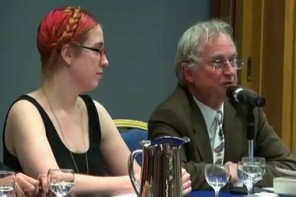Last week the research team of J. Craig Venter announced the creation of the first synthetic cell. The initial news articles featured reports of ethicists and theologians clutching their pearls in shock, fearing that the scientist could be “playing God.”
But with the exception of an inevitable Facebook page cropping up to oppose the research, much of the initial hype doesn’t appear to be panning out. Heck, even the Catholic church has expressed tentative support:
“It’s a great scientific discovery. Now we have to understand how it will be implemented in the future,” Monsignor Rino Fisichella, the Vatican’s top bioethics official, told Associated Press Television News.
“If we ascertain that it is for the good of all, of the environment and man in it, we’ll keep the same judgment,” he said. “If, on the other hand, the use of this discovery should turn against the dignity of and respect for human life, then our judgment would change.”
Those in the science community say the accomplishment, while fascinating and groundbreaking, is a far cry from the image of a creator blowing that first breath into Adam’s lungs.
Researchers used a computer to sequence a strand of DNA, which was inserted into a dead bacteria. Then they revived the cell. Venter has said he hopes to use the research to create a way to perhaps make cars that can “run on garbage” and organisms that could produce jet fuel.
PZ Myers at Pharyngula has a great explanation of the process here, as well as a discussion regarding why it’s premature to start panicking over what this could mean.
…It was also a lot more difficult than stitching together corpses and zapping it with lightning bolts. The DNA in this cell is over one million bases long, and it all had to be assembled appropriately with a sequencing machine. That was the first tricky part; current machines can’t build DNA strands that long. They could coax sequences about a thousand nucleotides long out of the machines.
Also, Carl Zimmer at The Loom writes that the synthetic bacteria carries a line from James Joyce encoded in its DNA, used as a watermark: “To live, to err, to fall, to triumph, to re-create life out of life.”
But don’t expect Joyce’s words to live on in immortality. As Zimmer writes:
Once the synthetic cell came to life and began to grow and divide, it copied its entire DNA, including Joyce’s words. But as lovely as those words may be, and as important as they may have been to the scientists during their experiment, they mean nothing to the microbe. Every time an organism replicates, each spot in its DNA has a tiny chance of mutating.
How wild is that?



